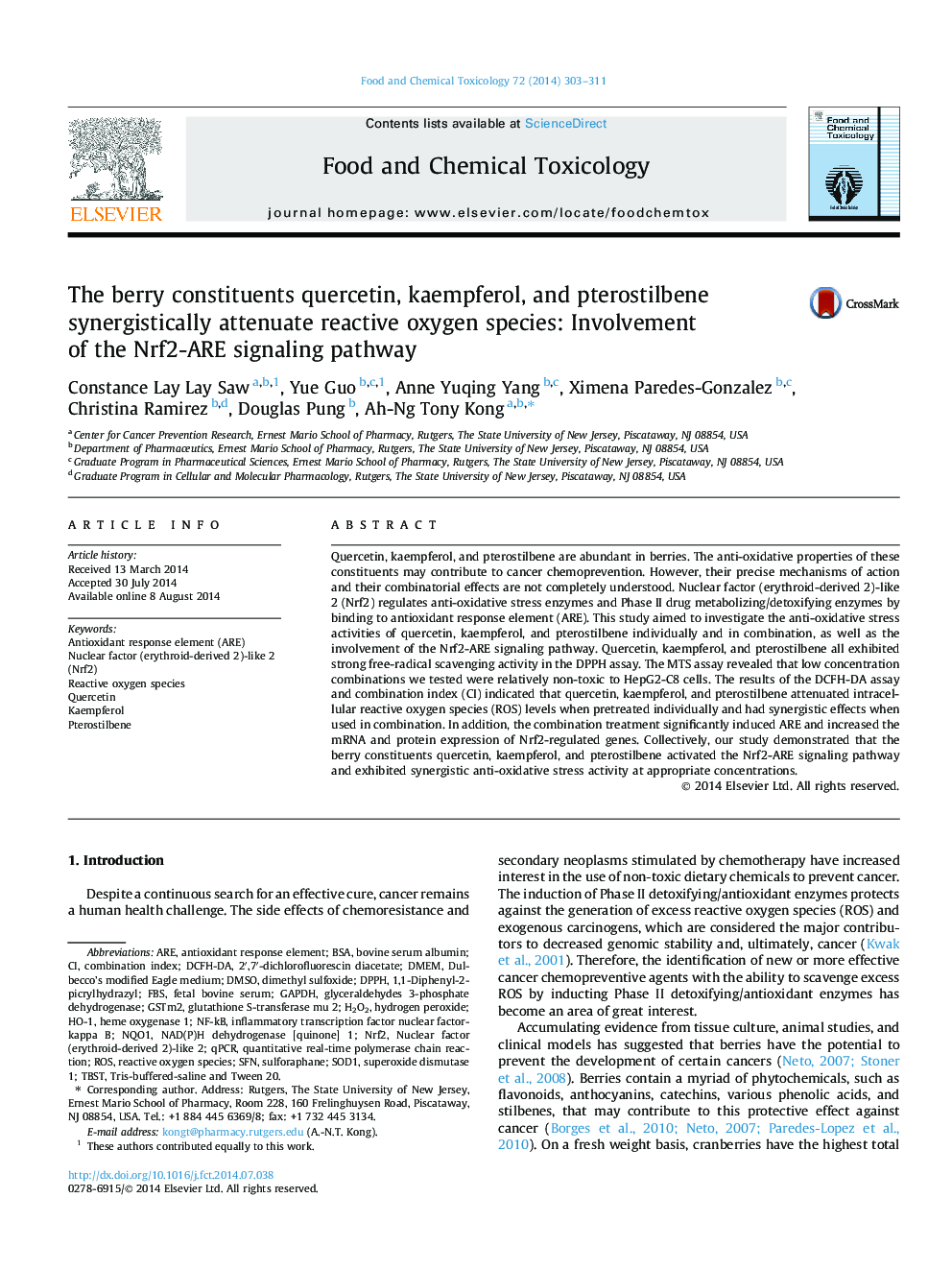| Article ID | Journal | Published Year | Pages | File Type |
|---|---|---|---|---|
| 2585016 | Food and Chemical Toxicology | 2014 | 9 Pages |
•Quercetin, kaempferol, and pterostilbene attenuated intracellular reactive oxygen species (ROS) levels.•Combination of quercetin, kaempferol, and pterostilbene at low concentrations synergistically attenuated intracellular ROS.•Quercetin, kaempferol, and pterostilbene induced ARE-luciferase activity in HepG2-C8 cells individually and in combination.•Combination treatments increased the mRNA and protein expression of Nrf2-regulated genes.
Quercetin, kaempferol, and pterostilbene are abundant in berries. The anti-oxidative properties of these constituents may contribute to cancer chemoprevention. However, their precise mechanisms of action and their combinatorial effects are not completely understood. Nuclear factor (erythroid-derived 2)-like 2 (Nrf2) regulates anti-oxidative stress enzymes and Phase II drug metabolizing/detoxifying enzymes by binding to antioxidant response element (ARE). This study aimed to investigate the anti-oxidative stress activities of quercetin, kaempferol, and pterostilbene individually and in combination, as well as the involvement of the Nrf2-ARE signaling pathway. Quercetin, kaempferol, and pterostilbene all exhibited strong free-radical scavenging activity in the DPPH assay. The MTS assay revealed that low concentration combinations we tested were relatively non-toxic to HepG2-C8 cells. The results of the DCFH-DA assay and combination index (CI) indicated that quercetin, kaempferol, and pterostilbene attenuated intracellular reactive oxygen species (ROS) levels when pretreated individually and had synergistic effects when used in combination. In addition, the combination treatment significantly induced ARE and increased the mRNA and protein expression of Nrf2-regulated genes. Collectively, our study demonstrated that the berry constituents quercetin, kaempferol, and pterostilbene activated the Nrf2-ARE signaling pathway and exhibited synergistic anti-oxidative stress activity at appropriate concentrations.
